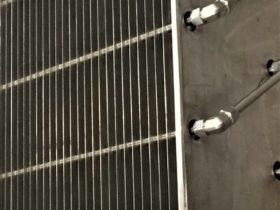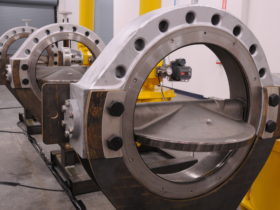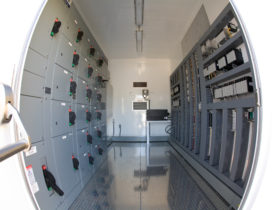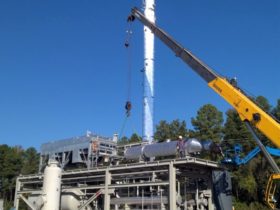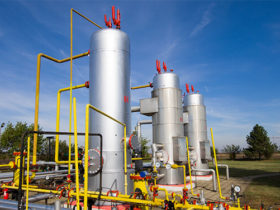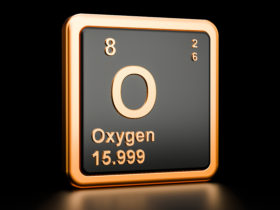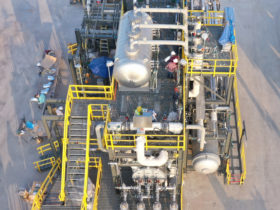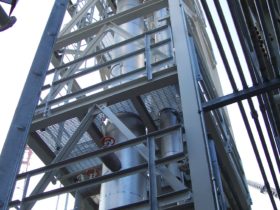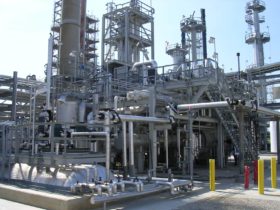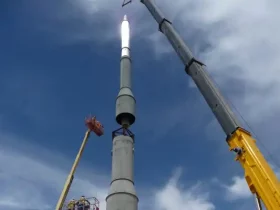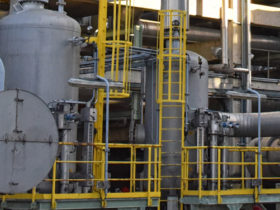
Units
Tail Gas Units
Tail Gas Units significantly increase in the overall recovery efficiency of your Sulfur Plant operations. The most common TGUs are either amine-based treating systems that recycle unrecovered H2S back to your SRU feed or Thermal Oxidizers with Caustic Wash systems that remove any residual sulfur species using caustic solutions that once treated can be safely sent to your wastewater system.
Contact our team today to discuss your operations, upgrade, revamp, or green field TGU project.
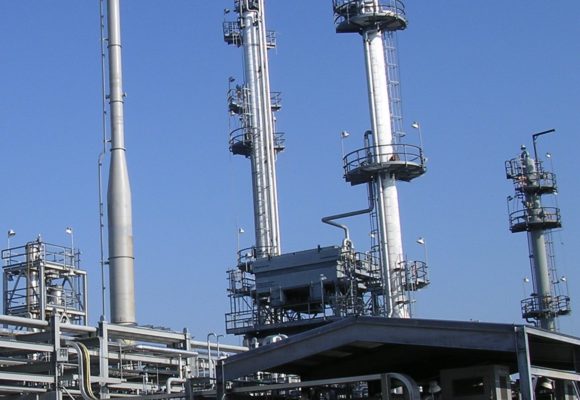
Depending on Feed composition, a typical 3-bed Claus sulfur recovery unit will operate at an overall recovery efficiency of between 95% and 97%. Advanced technology SRUs such as Selective Oxidation and Sub-Dewpoint Cold Bed Absorption (CBA) can push this efficiency up to 99%. For operators that need greater than 99% recovery, a Tail Gas Treating Unit will likely be your technology of choice.
TGUs come in a variety of flavors, and PTI’s sulfur team is well-versed in most of them.
One of the most mature technologies is to utilize amine-based treatment of your SRU Tail Gas Stream. Amine-based TGUs are often the most cost-effective option for SRU Tail Gas Treating for moderate to large-capacity Sulfur Facilities.
A typical amine-based TGU includes:
- Hydrogenation Reactor Section – The Tail Gas Reactor converts unrecovered SO2, COS, and CS2 back to H2S so that it may be captured in your TGU contactor.
- Quench Column to cool the tail gas stream leaving the TGU Reactor. By monitoring the pH of your circulating quench water, this system also provides a “safety net” to help capture upsets that may allow SO2 break through from the TGU Reactor.
- TGU Amine Contactor – A TGU Amine contactor is similar to the contractors in your plant’s primary amine system, but with several key differences. First, amine absorbs acid gas best at high pressure and high acid gas concentration in the vapor. A TGU contactor is low pressure and low concentration so selective amines must be used to target H2S and allow CO2 in the Tail Gas to pass through. Secondly, lean amine loading must be low so the contactor can absorb as much H2S as possible at low pressures and low concentrations. Thirdly, H2S can be absorbed faster than CO2 in selective amines so tray or packing residence time must be optimized to take advantage this difference in absorption kinetics.
- Amine Regeneration – Depending on the design of your plant’s primary amine unit and the recovery efficiencies required by your permit, the TGU rich amine stream may be returned to your ARU. For plant ARUs that do not use selective amines or operate under very stringent recovery efficiencies, a dedicated TGU Amine Regeneration section may be required.
Contact the PTI team today to dive into the details of your TGU amine system’s operation and performance requirements.
Another highly effective sulfur Tail Gas Unit involves caustic scrubbing. A Scrubber based TGU has the benefit of lower capital cost, but because the caustic solution used in the TGU scrubber cannot be regenerated, it is an added operating cost that must be factored into the life cycle evaluation for your plant. Caustic Scrubbing TGUs are most often seen in small to medium-sized sulfur plants, where the consumption of caustic is not a significant cost driver.
A typical Scrubber Based TGU includes the following:
- A Thermal Oxidizer designed to oxidize any residual sulfur compounds and other components contained in your SRU Tail Gas. Because of the pressure loss required to push through the downstream scrubbing equipment and cooler vent gas, this T.O. will always be forced draft.
- A Waste Heat Recovery section – The oxidized tail gas leaving the T.O. must be cooled to a target temperature required by the Scrubber. Typically the waste heat from the TGU T.O. can generate utility steam to be used in your plant.
- Scrubber section – An efficient TGU scrubber design provides a fresh caustic supply system, recirculation, and intimate contact between the tail gas stream and the caustic wash, which removes virtually all residual SO2 from the tail gas.
- Oxygenation – further oxidizing captured SO2 to SO4 with an air stream can allow discharge to publicly owned treatment works (POTW).
Contact our team to discuss the details if a Scrubber-based TGU is the right technology for your Sulfur facility.


